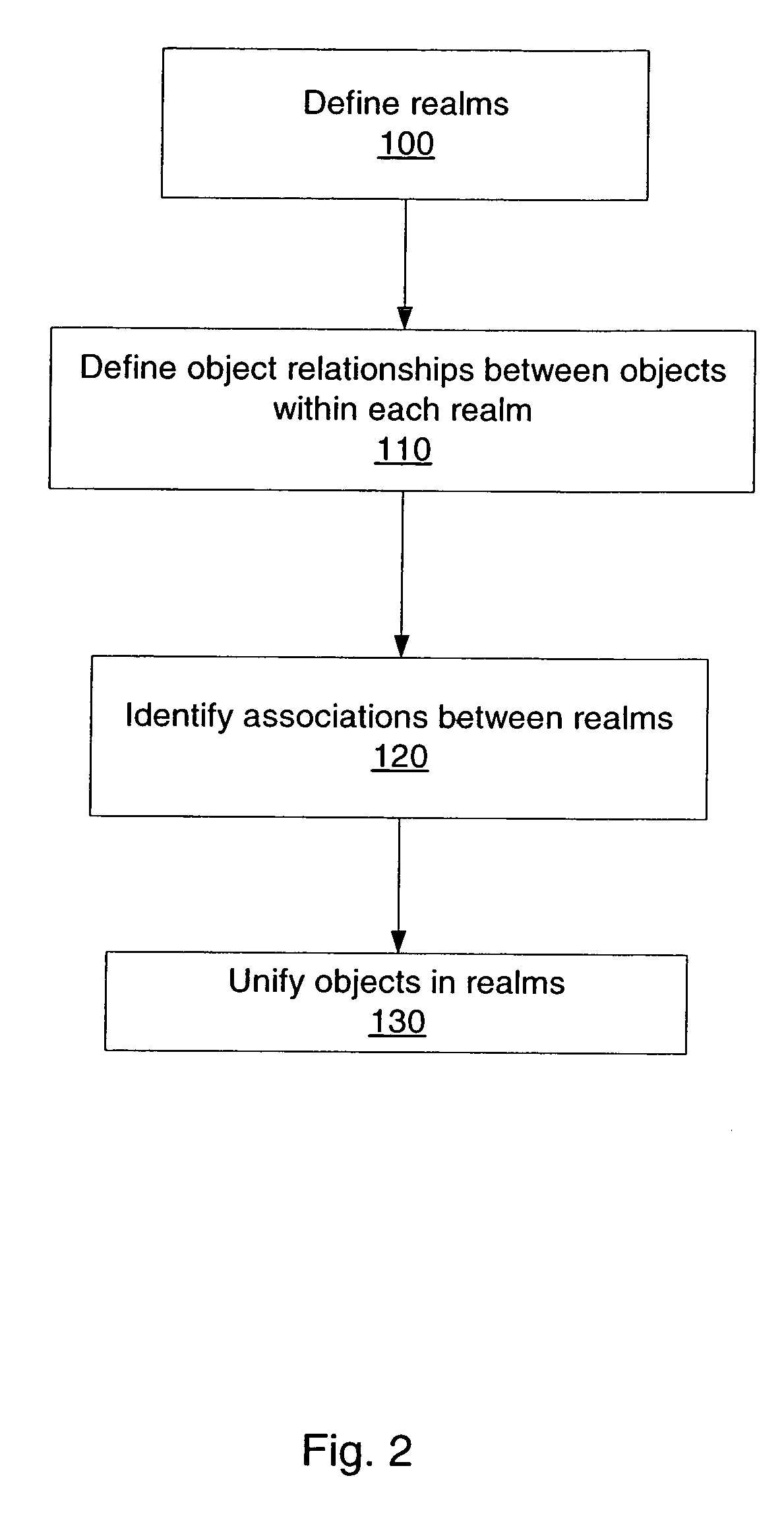Method and apparatus for multi-realm system modeling
a multi-realm system and modeling technology, applied in the field of modeling systems, can solve the problems of complex models of complex systems that are often too complex to be effectively processed as a monolithic whole, difficult to achieve integration of processing results, and difficulty further compounded
- Summary
- Abstract
- Description
- Claims
- Application Information
AI Technical Summary
Benefits of technology
Problems solved by technology
Method used
Image
Examples
example 1
[0145] A modeling method in accordance with one or more embodiments of the invention can be applied to the database service example shown in FIG. 1. One possible division of the system is generally depicted in FIGS. 11 and 12, which include the objects of FIG. 1 with the addition of relationship objects. Various other divisions are also possible depending on the particular division criteria selected.
[0146]FIG. 12 displays a possible definition of realms for the database service. In FIG. 12, a client realm (Realm 1) includes the client application and the client connection to the service. An application realm (Realm 2) includes the client application, the web server, the load balancer, and the database application. An OS realm (Realm 3) includes the scheduler, the processes, and the resource (memory and processor) allocations at each server. An infrastructure realm includes the VPN link and devices to support the VPN service between the client and the service ...
example 2
Generic End-to-End Infrastructure Management
[0160] One of the long-standing difficulties in the enterprise management space is managing the infrastructure end-to-end to optimize performance and availability of IT-dependent business services. The challenge is that the technology domains (applications, security, databases, servers, storage, network equipment, network protocols, etc.) are tightly intertwined, and thus behaviors propagate across these domains. Managing infrastructure end-to-end requires understanding the individual objects, the individual realms, behaviors, and how they propagate across related objects and related realms. An example of the use of MRSM in accordance with one or more embodiments of the invention for managing end-to-end infrastructures is as follows:
[0161] The infrastructure can be modeled and divided into the following realms: (1) physical network objects and their relationships; (2) data link layer objects and their relationships; (3) network layer obj...
example 3
Applications and Business Services Management Model
[0168] Another long-standing challenge in the enterprise management space is managing the infrastructure to optimize business performance. Business performance can be tightly dependent on the underlying end-to-end IT infrastructure, which can include applications, databases, servers, storage, network equipment, etc. To drive the management of IT by business objectives requires understanding the complex web of relationships within and across subsystems, and understanding how behaviors propagate, not only within the infrastructure, but also across applications, services, and users. FIG. 20 depicts a generic enterprise management system. The triangle shape depicts different layers or division of the overall system into business processes, applications that support business processes, and the IT infrastructure that, in turn, supports the applications. Furthermore, business services are intimately dependent on their supporting technolog...
PUM
 Login to View More
Login to View More Abstract
Description
Claims
Application Information
 Login to View More
Login to View More - R&D
- Intellectual Property
- Life Sciences
- Materials
- Tech Scout
- Unparalleled Data Quality
- Higher Quality Content
- 60% Fewer Hallucinations
Browse by: Latest US Patents, China's latest patents, Technical Efficacy Thesaurus, Application Domain, Technology Topic, Popular Technical Reports.
© 2025 PatSnap. All rights reserved.Legal|Privacy policy|Modern Slavery Act Transparency Statement|Sitemap|About US| Contact US: help@patsnap.com



